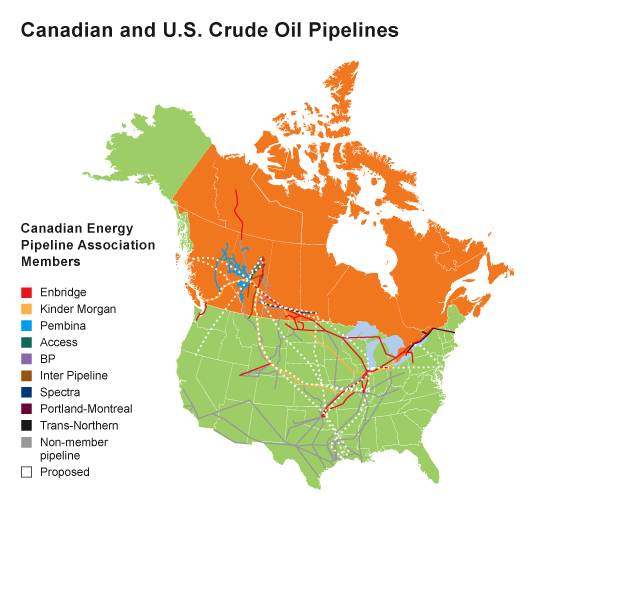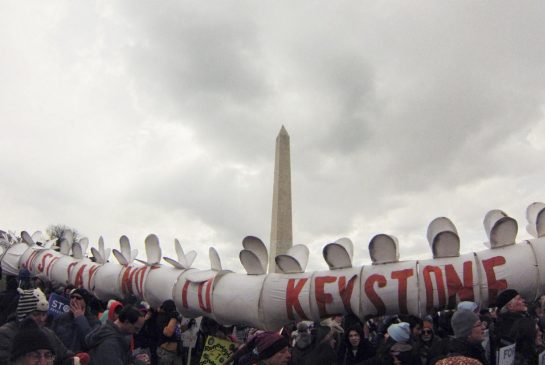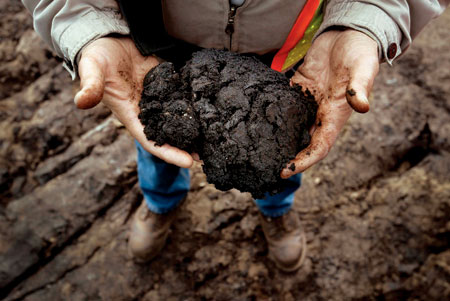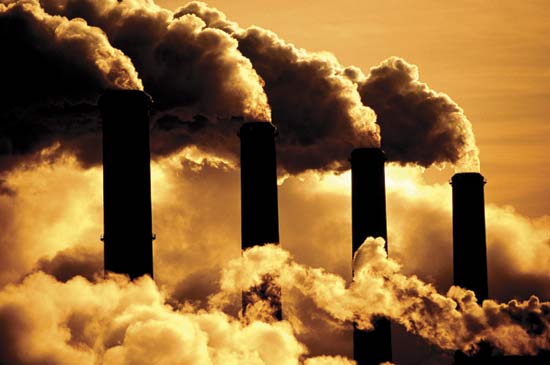This morning it was hard not to notice the coverage on Keystone in light of the Sunday protest by environmentalists on the Mall and in front of the White House in Washington, DC. I do not envy President Obama one bit as he wrestles with a decision to say YES or NO to build the northern segment of the Keystone pipeline. He has already approved the southern link from Cushing, Oklahoma to the Gulf Coast. The northern segment will close the link between the oil sands production sites in Northern Alberta and Cushing.
Since the President is no longer running for re-election he can make this decision without fear from an electoral backlash. But he must weigh the following when making the decision:
- With the increase in domestic supply of oil and gas from current and future hydraulic fracturing projects, what will be the impact of a negative response to the pipeline on United States energy needs?
- What will be the interim requirements for secure foreign oil if current and future domestic projects cannot meet national fossil fuel energy demands?
- How will a negative decision affect short and longer-term trade and political relations with Canada?
- With the commitment to the climate file in his recent State of the Union speech in which he never mentioned Keystone, how will a yes be perceived by the environmental lobby who played a part in his re-election?
- How will a Republican Congress respond to a negative decision?
- What will be the political fallout of a NO in districts within the country that would have been beneficiaries of jobs and revenue from building and operating the pipeline?
- And finally, how will domestic oil companies heavily invested in oil sands properties and infrastructure respond to a no?
I have written many times about bitumen (see picture above), or as it is more commonly called oil or tar sand, the latter being a pejorative that suggests a dirty source of fossil fuel. It is indeed a problematic source of energy. When bitumen was first discovered along the banks of the Athabasca River in the 19th century it was mined by the bucket with the oil steamed from the sand. This was the state of the industry and technology used by oil producers until the the latter part of the 20th century. But today new technology is being tested that involves much less water and uses electromagnetic heating to free up the bitumen without open pit mining. The industry overall, however, continues to use a mix of methods, one of which is no different from the original. And for older methods of processing bitumen into synthetic crude, vast holding ponds have been created, accidents waiting to happen for the people who live in proximity or downstream from the extraction and upgrading sites.
Our Oil Dependence
The problem we face is greater than just the oil sands. We are fossil fuel dependent and oil remains a primary fuel for running our economies. As a result we have built an infrastructure in North America to ship oil everywhere you look. The map below shows current and proposed pipelines.  Note that proposed pipelines, of which Keystone is one, are drawn in white. The northern Keystone pipeline, the one being hotly contested is the one that heads south from Alberta through Montana, Wyoming, Nebraska, Kansas and Oklahoma. The President approved the southern leg from Oklahoma to the Gulf Coast last year. It’s a done deal and will serve the new production coming from hydraulic fracturing of oil shales.
Note that proposed pipelines, of which Keystone is one, are drawn in white. The northern Keystone pipeline, the one being hotly contested is the one that heads south from Alberta through Montana, Wyoming, Nebraska, Kansas and Oklahoma. The President approved the southern leg from Oklahoma to the Gulf Coast last year. It’s a done deal and will serve the new production coming from hydraulic fracturing of oil shales.
There is another line in the sand battle that many Americans may not know about. It is happening right now over a Canadian domestic pipeline proposed to run from those same oil sands that Keystone is supposed to serve but in this case is routed through northern British Columbia to Kitimat, a Pacific coast port. This pipeline is intended to provide an export outlet for synthetic crude from bitumen going to Asia and California.
Another battle is shaping up over the doubling of capacity of an existing oil pipeline corridor running from the oil sands through the Fraser River valley in British Columbia to the port of Burnaby, near Vancouver, where oil would be shipped to trans-Pacific customers.
And what’s not on this map are proposals to build pipelines or reverse existing ones within Canada so that production from oil sands can be shipped east to replace imported oil to meet Canadian domestic requirements and refinery capacity.
If one or more of these pipelines gets built oil sands capacity will increase and the loss of Keystone will be somewhat mitigated for the oil producers.
The Real Issue Isn’t Keystone – It’s CO2
The primary goal of environmentalists remains the real issue to confront – the reduction of our carbon footprint on the planet. That requires much more than just drawing lines in the sand around an oil pipeline.
I’m an environmentalist, no bones about it. But I find the focus on Keystone to be facile to say the least. So whether the President decides yea or nay the real problem of CO2 emissions will not go away, at least not without a much larger effort to constrain our energy demand.
How can we do that?
Here are 7 actions we. as citizens of the world, must take if we are to succeed. And these 7 actions start with individuals who through social networking, the press, consumer behaviour and political action can exert an influence on industry and government to tackle carbon:
- We must move away from internal combustion engine (ICE) technology in transportation. Currently the U.S. government has raised mileage standard targets for the industry that must be met over the next decade. Canada is following the U.S. lead. This entire approach to game changing does not cut it. We need to get to alternatives to ICE much sooner. Those alternatives include hybrids, pure EVs, fuel cell, diesel, steam and natural gas. That means we need, as consumers, to put much more pressure on the industry and on our governments to make ICE go away. Reducing gasoline usage will dramatically lessen our need for oil and its derivative products.
- We either create the “clean coal” technology revolution that we continue to talk about, or abandon the burning of coal to generate electricity once and for all, replacing it with renewables and low emission alternatives. Coal-fired power plants in the United States, China, Canada and many other countries are responsible for much of the CO2 we emit. Removing coal from the energy mix will do more to reduce CO2 than all the oil pipelines current or planned.
- I have written about some promising inventions for sequestration but if that is our only answer to the CO2 we emit through industry and energy then we had better start emitting far less. Sequestration, like oil sands, is problematic. Government investment in sequestration projects remains the key reasons any industrial players get involved in these projects. If there is such reluctance it would be better to just address the emissions and make sure they are cut.
- For this purpose North America needs a continent-wide cap and trade exchange in carbon and it is needed now. Cap and trade is working in other parts of the world. India and China have internal carbon markets. Australia has instituted cap and trade. The European Union is doing it. Why not North America? It has worked in the past for us here in our efforts to reduce sulphur acid-rain causing emissions so we know it can be done. We need to tell our governments to get it done, to implement the carrot and stick motivational approach to CO2 reductions.
- We need to fast-track the science around all forms of renewable energy. I have stated before that the world requires a “Manhattan Project” type investment in research and development on alternative energy technology from photovoltaics, to solar molten salt, to wind, wave and tide, low-environment impact hydroelectric and new nuclear.
- In addition we need to change our throw away mentality and draw energy from the waste we create by creating closed loop processes that maximize recycling of organics and fossil fuel products we put in landfill today.
- We need to update our infrastructure to help us reduce fossil fuel use. This means improving roads (potholes reduce gas mileage) and road networks, ending gridlock in urban centres where idling cars contribute to smog and CO2, and building a modern rail network and much more mass transit. It also means improving the energy efficiency of our homes, factories, schools and other structures. Through conservation and improvements to existing infrastructure we can reduce our current carbon footprint by half.
So whether President Obama says yes or no to Keystone it will matter little in the larger scheme of things.
If he says NO it will be a symbolic victory for environmentalists but only a baby step in tackling the problem of rising CO2.
If he says YES it will be more about short-term security of supply than about the environmental consequences because Keystone’s carbon footprint will truly be just a drop in the bucket when compared to all the other carbon emitters within our North American economy.
And if he implements one or more of the 7 actions outlined above, then we will begin to take the right steps to truly address the climate file.











